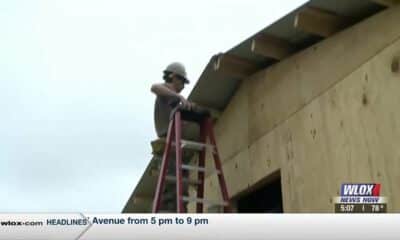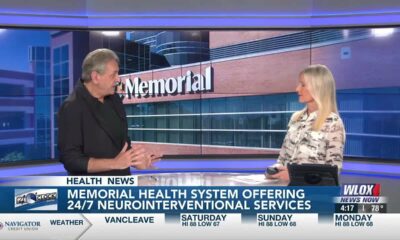Kaiser Health News
Health Care ‘Game-Changer’? Feds Boost Care for Homeless Americans
Angela Hart
Thu, 19 Oct 2023 09:00:00 +0000
The Biden administration is making it easier for doctors and nurses to treat homeless people wherever they find them, from creekside encampments to freeway underpasses, marking a fundamental shift in how — and where — health care is delivered.
As of Oct. 1, the Centers for Medicare & Medicaid Services began allowing public and private insurers to pay “street medicine” providers for medical services they deliver anyplace homeless people might be staying.
Previously, these providers weren't getting paid by most Medicaid programs, which serve low-income people, because the services weren't delivered in traditional medical facilities, such as hospitals and clinics.
The change comes in response to the swelling number of homeless people across the country, and the skyrocketing number of people who need intensive addiction and mental health treatment — in addition to medical care for wounds, pregnancy, and chronic diseases like diabetes.
“It's a game-changer. Before, this was really all done on a volunteer basis,” said Valerie Arkoosh, secretary of Pennsylvania's Department of Human Services, which spearheaded a similar state-based billing change in July. “We are so excited. Instead of a doctor's office, routine medical treatments and preventive care can now be done wherever unhoused people are.”
California led the nation when its state Medicaid director in late 2021 approved a new statewide billing mechanism for treating homeless people in the field, whether outdoors or indoors in a shelter or hotel. “Street medicine providers are our trusted partners on the ground, so their services should be paid for,” Jacey Cooper told KFF Health News.
Hawaii and Pennsylvania followed. And while street medicine teams already operate in cities like Boston and Fort Worth, Texas, the new government reimbursement rule will allow more health care providers and states to provide the services.
“It's a bombshell,” said Dave Lettrich, executive director of the Pittsburgh-based nonprofit Bridge to the Mountains, which provides outreach services to street medicine teams in Pennsylvania. “Before, you could provide extensive primary care and even some specialty care under a bridge, but you couldn't bill for it.”
Under the new rule, doctors, nurses, and other providers can get reimbursed to care for patients in a “non-permanent location on the street or found environment,” making it the first time the federal government has recognized the streets as a legitimate place to provide health care. This will primarily affect low-income, disabled, and older people on Medicaid and Medicare.
“The Biden-Harris Administration has been focused on expanding access to health care across the country,” said CMS spokesperson Sara Lonardo, explaining that federal officials created a new reimbursement code at the request of street medicine providers who weren't consistently getting reimbursed.
The White House unveiled an ambitious strategy this year to reduce homelessness in America 25% by 2025, in part by plowing health care money into better care for those living on the streets.
Legislation pending in Congress would further expand reimbursement for street medicine, taking aim at the mental health and addiction crisis on the streets. The bipartisan bill, introduced earlier this year, has not yet had a committee hearing.
Nearly 600,000 people are homeless in America, based on federal estimates from 2022, and on average they die younger than those who have stable housing. The life expectancy for homeless people is 48, compared with the overall life expectancy of 76 years in the U.S.
More than 150 street medicine programs operate across the country, according to street medicine experts. At least 50 are in California, up from 25 in 2022, said Brett Feldman, director of street medicine at the University of Southern California's Keck School of Medicine.
Feldman spearheaded the state and national efforts to help street medicine providers get paid, alongside the Street Medicine Institute. They submitted a formal request to the Biden administration in January 2022 to ask for a new street medicine billing code.
In the letter, they argued that street medicine saves lives — and money.
“This is done via walking rounds with backpacks, usually working out of a pick-up truck or car, but is also done via horseback, kayak, or any other means to reach hard-to-reach people,” they wrote. “The balance of power is shifted to the patient, with them as the lead of their medical team.”
Street medicine experts argue that by dramatically expanding primary and specialty care on the streets, they can interrupt the cycle of homelessness and reduce costly ambulance rides, hospitalizations, and repeated trips to the emergency room. Street medicine could help California save 300,000 ER trips annually, Feldman projected, based on Medicaid data. Some street medicine teams are even placing people into permanent housing.
Arkoosh said there's already interest bubbling up across Pennsylvania to expand street medicine because of the federal change. In Hawaii, teams are plotting to go into remote encampments, some in rainforests, to expand primary and behavioral health care.
“We're seeing a lot of substance abuse and mental health issues and a lot of chronic diseases like HIV,” said Heather Lusk, executive director of the Hawai'i Health & Harm Reduction Center, which provides street medicine services. “We're hoping this can help people transition from the streets into permanent housing.”
But the federal change, undertaken quietly by the Biden administration, needs a major public messaging campaign to get other states on board and to entice more providers to participate, said Jim Withers, a longtime street medicine provider in Pittsburgh who founded the Street Medicine Institute.
“This is just the beginning, and it's a wake-up call because so many people are left out of health care,” he said.
This article was produced by KFF Health News, which publishes California Healthline, an editorially independent service of the California Health Care Foundation.
——————————
By: Angela Hart
Title: Health Care ‘Game-Changer'? Feds Boost Care for Homeless Americans
Sourced From: kffhealthnews.org/news/article/street-medicine-cms-new-reimbursement-code/
Published Date: Thu, 19 Oct 2023 09:00:00 +0000
Did you miss our previous article…
https://www.biloxinewsevents.com/suzanne-somers-legacy-tainted-by-celebrity-medical-misinformation/
Kaiser Health News
Journalists Delve Into Climate Change, Medicaid ‘Unwinding,’ and the Gap in Mortality Rates
Sat, 04 May 2024 09:00:00 +0000
KFF Health News senior correspondent Samantha Young discussed Medicaid and climate change on KCBS Radio's “On-Demand” podcast on April 29.
- Click here to hear Young on KCBS
- Read Young's “AC, Power Banks, Mini Fridges: Oregon Equips Medicaid Patients for Climate Change“
KFF Health News contributor Andy Miller discussed Medicaid unwinding on WUGA's “The Georgia Health Report” on April 26.
- Click here to hear Miller on “The Georgia Health Report”
- Read Phil Galewitz' “Millions Were Booted From Medicaid. The Insurers That Run It Gained Medicaid Revenue Anyway.“
KFF Health News Nevada correspondent Jazmin Orozco Rodriguez discussed mortality rates in rural America on The Daily Yonder's “The Yonder Report” on April 24.
- Click here to hear Rodriguez on “The Yonder Report”
- Read Rodriguez' “City-Country Mortality Gap Widens Amid Persistent Holes in Rural Health Care Access”
——————————
Title: Journalists Delve Into Climate Change, Medicaid ‘Unwinding,' and the Gap in Mortality Rates
Sourced From: kffhealthnews.org/news/article/journalists-delve-into-climate-change-medicaid-unwinding-and-the-gap-in-mortality-rates/
Published Date: Sat, 04 May 2024 09:00:00 +0000
Did you miss our previous article…
https://www.biloxinewsevents.com/oh-dear-baby-gear-why-are-the-manuals-so-unclear/
Kaiser Health News
Oh, Dear! Baby Gear! Why Are the Manuals So Unclear?
Darius Tahir
Fri, 03 May 2024 09:00:00 +0000
Since becoming a father a few months ago, I've been nursing a grudge against something tiny, seemingly inconsequential, and often discarded: instructional manuals. Parenthood requires a lot of gadgetry to maintain a kid's health and welfare. Those gadgets require puzzling over booklets, decoding inscrutable pictographs, and wondering whether warnings can be safely ignored or are actually disclosing a hazard.
To give an example, my daughter, typically a cooing little marsupial, quickly discovered babyhood's superpower: Infants emerge from the womb with talon-strength fingernails. She wasn't afraid to use them, against either her parents or herself. So we purchased a pistachio-green, hand-held mani-pedi device.
That was the easy part. The difficulty came when we consulted the manual, a palm-sized, two-page document.
The wandlike tool is topped with a whirring disc. One can apparently adjust the speed of its rotation using a sliding toggle on the wand. But the product manual offered confusing advice: “Please do not use round center position grinding,” it said. Instead, “Please use the outer circle position to grinding.” It also proclaimed, “Stay away from children.” In finer print, the manual revealed the potential combination of kids and the device's smaller parts was the reason for concern.
One would hope for more clarity about a doodad that could inadvertently cause pain.
Later, I noticed another warning: “If you do not use this product for a long time, please remove the battery.” Was it dangerous? Or simply an unclear and unhelpful yet innocuous heads-up? We didn't know what to do with this information.
We now notice shoddy instructions everywhere.
One baby carrier insert told us to use the product for infants with “adequate” head, neck, and torso control — a vague phrase. (The manufacturer declined to comment.)
Another manual, this one online and for a car seat — a device that's supposed to protect your kid — informed readers with words and images that a model baby was “properly positioned” relative to the top of the headrest “structure” when more than one inch from the top. Just pixels away, the same model, slumped further down, was deemed improperly positioned: “The headrest should not be more than 1” from the top of her head,” it said, in tension with its earlier instructions. Which was it, more than one inch or not? So we fiddle and hope for the best.
I acknowledge this sounds like new-parent paranoia. But we're not entirely crazy: Manuals are important, and ones for baby products “are notoriously difficult to write,” Paul Ballard, the managing director of 3di Information Solutions, a technical writing firm, told me.
Deborah Girasek, a professor of social and behavior sciences at the Uniformed Services University of the Health Sciences, told me that for decades, for the young and middle-aged alike, unintentional injury has been the leading cause of death. That's drownings, fires, suffocation, car crashes. The USU is a federal service academy training medical students destined for the armed services or other parts of the government.
Some of these deaths are caused by lack of effective communication — that is, the failure of instruction about how to avoid injury.
And these problems stretch from cheap devices to the most sophisticated products of research and development.
It's a shortcoming that's prompted several regulatory agencies charged with keeping Americans healthy, including the Consumer Product Safety Commission, the Food and Drug Administration, and the National Highway Traffic Safety Administration, to prod companies into providing more helpful instructions.
By some lights, they've had success. NHTSA, for example, has employees who actually read manuals. The agency says about three-quarters of car seats' manuals rate four or five stars out of five, up from 38% in 2008. Then again, our car seat's has a five-star rating. But it turns out the agency doesn't evaluate online material.
Medical product manuals sometimes don't fare too well either. Raj Ratwani, director of MedStar Health's Human Factors program, told me that, for a class he teaches to nurses and doctors, he prompted students to evaluate the instructions for covid-19 tests. The results were poor. One time, instructions detailed two swabs. The kit had only one.
Technical writers I spoke with identified this kind of mistake as a symptom of cost cutting. Maybe a company creates one manual meant to cover a range of products. Maybe it puts together the manual at the last moment. Maybe it farms out the task to marketers, who don't necessarily think about how manuals need to evolve as the products do.
For some of these cost-cutting tactics, “the motivation for doing it can be cynical,” Ballard said.
Who knows.
Some corners of the technical writing world are gloomy. People worry their jobs aren't secure, that they're going to be replaced by someone overseas or artificial intelligence. Indeed, multiple people I spoke with said they'd heard about generative AI experiments in this area.
Even before AI has had its effect, the job market has weighed in. According to the federal government, the number of technical writers fell by a third from 2001, its recent peak, to 2023.
One solution for people like us — frustrated by inscrutable instructions — is to turn to another uncharted world: social media. YouTube, for instance, has helped us figure out a lot of the baby gadgets we have acquired. But those videos also are part of a wild West, where creators offer helpful tips on baby products then refer us to their other productions (read: ads) touting things like weight loss services. Everyone's got to make a living, of course; but I'd rather they not make a buck off viewers' postpartum anxiety.
It reminds me of an old insight that became a digital-age cliché: Information wants to be free. Everyone forgets the second half: Information also wants to be expensive. It's cheap to share information once produced, but producing that information is costly — and a process that can't easily or cheaply be replaced. Someone must pay. Instruction manuals are just another example.
——————————
By: Darius Tahir
Title: Oh, Dear! Baby Gear! Why Are the Manuals So Unclear?
Sourced From: kffhealthnews.org/news/article/baby-product-instruction-manuals-confusing-technical-writing/
Published Date: Fri, 03 May 2024 09:00:00 +0000
Kaiser Health News
California Floats Extending Health Insurance Subsidies to All Adult Immigrants
Jasmine Aguilera, El Tímpano
Fri, 03 May 2024 09:00:00 +0000
Marisol Pantoja Toribio found a lump in her breast in early January. Uninsured and living in California without legal status and without her family, the usually happy-go-lucky 43-year-old quickly realized how limited her options were.
“I said, ‘What am I going to do?'” she said in Spanish, quickly getting emotional. She immediately worried she might have cancer. “I went back and forth — I have [cancer], I don't have it, I have it, I don't have it.” And if she was sick, she added, she wouldn't be able to work or pay her rent. Without health insurance, Pantoja Toribio couldn't afford to find out if she had a serious condition.
Beginning this year, Medi-Cal, California's Medicaid program, expanded to include immigrants lacking legal residency, timing that could have worked out perfectly for Pantoja Toribio, who has lived in the Bay Area city of Brentwood for three years. But her application for Medi-Cal was quickly rejected: As a farmworker earning $16 an hour, her annual income of roughly $24,000 was too high to qualify for the program.
California is the first state to expand Medicaid to all qualifying adults regardless of immigration status, a move celebrated by health advocates and political leaders across the state. But many immigrants without permanent legal status, especially those who live in parts of California where the cost of living is highest, earn slightly too much money to qualify for Medi-Cal.
The state is footing the bill for the Medi-Cal expansion, but federal law bars those it calls “undocumented” from receiving insurance subsidies or other benefits from the Affordable Care Act, leaving many employed but without viable health insurance options.
Now, the same health advocates who fought for the Medi-Cal expansion say the next step in achieving health equity is expanding Covered California, the state's ACA marketplace, to all immigrant adults by passing AB 4.
“There are people in this state who work and are the backbone of so many sectors of our economy and contribute their labor and even taxes … but they are locked out of our social safety net,” said Sarah Dar, policy director at the California Immigrant Policy Center, one of two organizations sponsoring the bill, dubbed #Health4All.
To qualify for Medi-Cal, an individual cannot earn more than 138% of the federal poverty level, which currently amounts to nearly $21,000 a year for a single person. A family of three would need to earn less than $35,632 a year.
For people above those thresholds, the Covered California marketplace offers various health plans, often with federal and state subsidies, yielding premiums as low as $10 a month. The hope is to create what advocates call a “mirror marketplace” on the Covered California website so that immigrants regardless of status can be offered the same health plans that would be subsidized only by the state.
Despite a Democratic supermajority in the legislature, the bill might struggle to pass, with the state facing a projected budget deficit for next year of anywhere from $38 billion to $73 billion. Gov. Gavin Newsom and legislative leaders announced a $17 billion package to start reducing the gap, but significant spending cuts appear inevitable.
It's not clear how much it would cost to extend Covered California to all immigrants, according to Assembly member Joaquin Arambula, the Fresno Democrat who introduced the bill.
The immigrant policy center estimates that setting up the marketplace would cost at least $15 million. If the bill passes, sponsors would then need to secure funding for the subsidies, which could run into the billions of dollars annually.
“It is a tough time to be asking for new expenditures,” Dar said. “The mirror marketplace startup cost is a relatively very low number. So we're hopeful that it's still within the realm of possibility.”
Arambula said he's optimistic the state will continue to lead in improving access to health care for immigrants who lack legal residency.
“I believe we will continue to stand up, as we are working to make this a California for all,” he said.
The bill passed the Assembly last July on a 64-9 vote and now awaits action by the Senate Appropriations Committee, Arambula's office said.
An estimated 520,000 people in California would qualify for a Covered California plan if not for their lack of legal status, according to the labor research center at the University of California-Berkeley. Pantoja Toribio, who emigrated alone from Mexico after leaving an abusive relationship, said she was lucky. She learned about alternative health care options when she made her weekly visit to a food pantry at Hijas del Campo, a Contra Costa County farmworker advocacy organization, where they told her she might qualify for a plan for low-income people through Kaiser Permanente.
Pantoja Toribio applied just before open enrollment closed at the end of January. Through the plan, she learned that the lump in her breast was not cancerous.
“God heard me,” she said. “Thank God.”
This article was produced by KFF Health News, which publishes California Healthline, an editorially independent service of the California Health Care Foundation.
——————————
By: Jasmine Aguilera, El Tímpano
Title: California Floats Extending Health Insurance Subsidies to All Adult Immigrants
Sourced From: kffhealthnews.org/news/article/california-legislation-medicaid-subsidies-all-adult-immigrants/
Published Date: Fri, 03 May 2024 09:00:00 +0000
Did you miss our previous article…
https://www.biloxinewsevents.com/bird-flu-is-bad-for-poultry-and-dairy-cows-its-not-a-dire-threat-for-most-of-us-yet/
-
SuperTalk FM3 days ago
Driver’s education set to become mandatory in Mississippi as bill passes
-
SuperTalk FM6 days ago
Festival merger in Leland sets up one major event for Mississippi Delta
-
SuperTalk FM2 days ago
State approves $160M to expand Highway 7 to four lanes in Lafayette County
-
Mississippi Business4 days ago
Geartek expanding operations in Alcorn County
-
SuperTalk FM6 days ago
PERS bill set to phase in employer rate increase heads to governor’s desk
-
Mississippi News5 days ago
Two women accused of shoplifting across southeast captured in Mississippi
-
Mississippi News3 days ago
Altercation at Mississippi police department leads to officer-involved shooting
-
Mississippi Today6 days ago
Podcast: The contentious final days of the 2024 legislative session







































